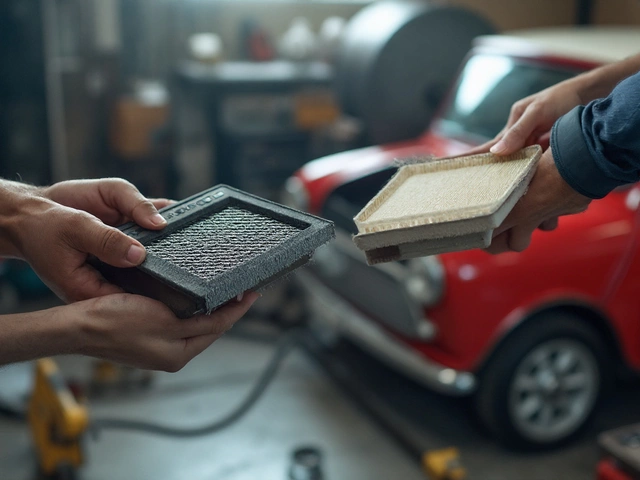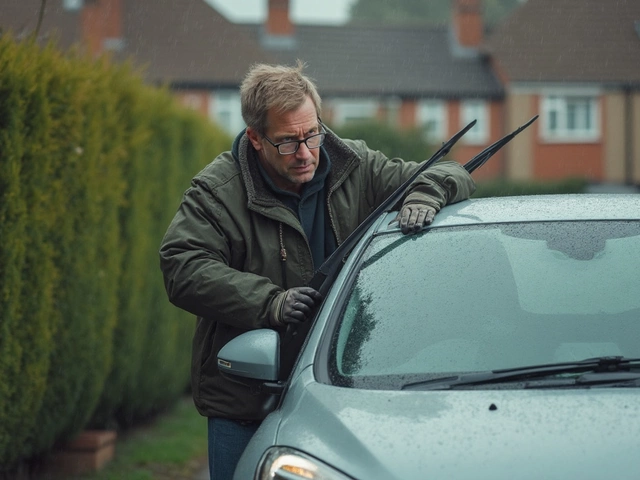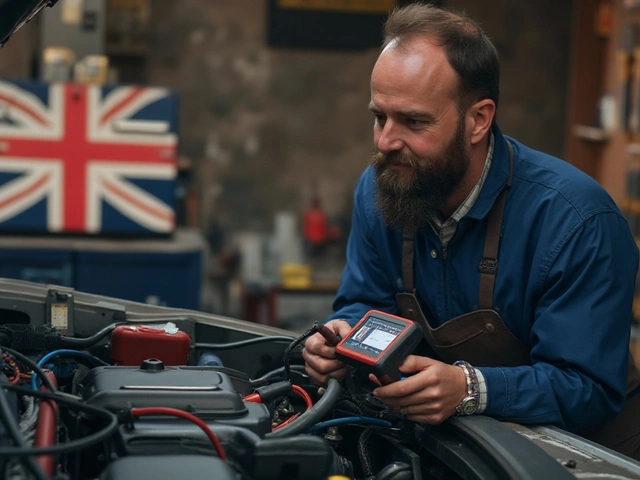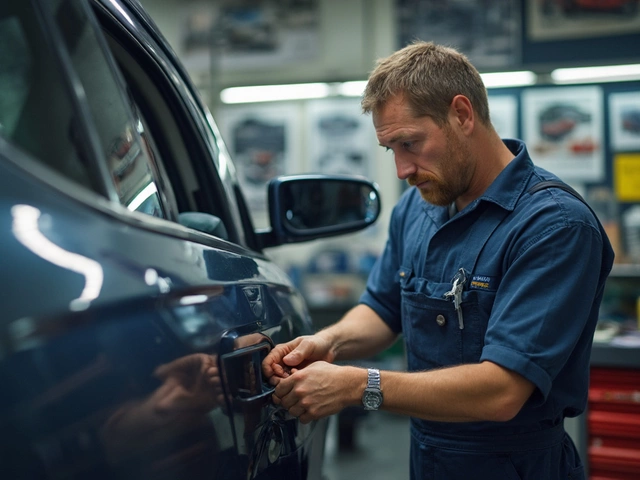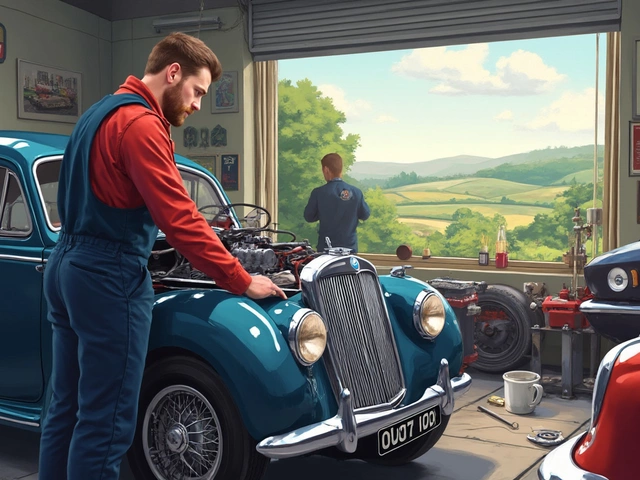Ever thought about buying brake pads on your own? Many drivers are wondering if it's a smarter move for their wallets. Let’s break it down.
First off, buying your own brake pads can definitely save you a chunk of change. Shops usually mark up parts they order for you, sometimes by 30% or more. When you do it yourself, you skip that extra cost.
But it’s not just about money. Choosing your own pads means you get exactly the quality you want, which is crucial for safety and performance. However, it requires some know-how. You need to make sure you’re picking the right pads for your car and driving style.
Cost isn’t the only factor, though. Consider your skill level, too. If you’re handy with tools and pretty familiar with brake systems, DIY might be a breeze. If you're new to all this, weigh the time and effort you’ll need to invest before taking the plunge.
So, while buying brake pads yourself could save you cash, be sure you're equipped with the right knowledge to make it worthwhile. The satisfaction of doing it yourself is a bonus, if you’re up for the challenge!
- Why Buy Your Own Brake Pads?
- Comparing Costs: DIY vs Pro
- What to Look for in Quality Brake Pads
- Tips for Successful Installation
Why Buy Your Own Brake Pads?
Thinking about getting your own brake pads? It's a growing trend among DIY car enthusiasts and for a good reason. There are several advantages to buying your own brake pads, especially if you're looking to save some cash and tailor your braking system to your needs.
Cost Savings
Generally, one of the main reasons people choose to buy their own brake pads is cost savings. When you purchase the parts directly, you avoid the markup that most shops add to their items. This could mean a difference of 30% or more—a significant saving!
Control Over Quality
Getting your own parts lets you decide on the quality. Whether you're eyeing premium performance pads for spirited driving or affordable ones for city commutes, the choice is yours. Know that not all pads are made equal—some materials offer better performance and longer life.
“Ensuring you're using the right type of brake pads is crucial for both safety and vehicle performance,” says John Tupper, an auto expert from 'DriveSafe Magazine'.
Learning and Experience
Another cool thing about buying and installing your own pads is the learning experience. It deepens your understanding of your vehicle's braking system and sharpen your skills. Not to mention the satisfaction of a job well done!
Easy Access and Range of Options
These days, there's no shortage of options when it comes to purchasing brake pads. You can buy them online from platforms like Amazon or at local auto stores. This wide availability means you can easily compare prices and find exactly what suits your car model and budget.
So, buying your own brake pads offers some pretty compelling benefits. Just make sure you've done your homework so you can enjoy both the cost savings and the confidence that comes with installing high-quality parts.
Comparing Costs: DIY vs Pro
Figuring out if doing it yourself is cheaper can be tricky, especially when it comes to something important like brake pads. Let's break down the costs to see if you’re really saving by going the DIY route.
DIY Costs
When you decide to buy and install brake parts yourself, you're mainly dealing with the cost of the parts and any tools that you might need. Good brake pads can range anywhere from $25 to $75 per set. If you're new to this, you might need to buy some basic tools like a jack or wrenches, which can add another $50 to $100 easily.
- Brake pads: $25-$75
- Tool kit: $50-$100 (if not already owned)
Plus, factor in your time. It could take you a couple of hours to finish the job if you’re not experienced. Your time has value, so think about the opportunity cost.
Professional Costs
Taking your car to a shop is way more convenient but at a price. Labor charges usually start around $100 per axle, sometimes more if you’re in a big city. Throw in those marked-up cost savings on parts, and you can see why total costs can soar over $200 to $300 for just the front or rear!
- Labor: $100-$150 per axle
- Marked-up brake pads: $30% more than buying direct
On one hand, you’re paying for the shop's expertise and equipment which can make the service faster and probably more reliable. There’s also the added peace of mind knowing it’s done professionally.
| Cost Factor | DIY | Professional |
|---|---|---|
| Brake Pads | $25-$75 | $32.50-$97.50 |
| Tools | $50-$100 | $0 |
| Labor | $0 | $100-$150 |
| Total Estimate per Axle | $75-$175 | $200-$300 |
So, what’s the verdict? If your aim is pure cost savings, going DIY can trim your expenses significantly, provided you have the time and energy to put into the project. However, if convenience and peace of mind top your list, ponying up for a pro could be worth every penny.

What to Look for in Quality Brake Pads
Shopping for brake pads can seem daunting with all the brands and types out there. But picking the right ones is essential for your car's safety and efficiency. Let's break down what to consider.
Material Matters
First, check the material. Brake pads generally come in three main types: organic, semi-metallic, and ceramic. Each has its perks. Organic pads are quieter and cheaper, while semi-metallic ones are great if you're looking for durability and performance. Ceramic brake pads are known for less dust and noise. Match the material to your car’s needs and your driving habits.
Heat Dispersion
Look for pads that handle heat well. Brake pads can hit 500°F during use. Good pads disperse heat to maintain effective stopping power and reduce wear.
Noise Level
Noisy brakes are annoying. Some pads come with shims or other measures to reduce noise. If quiet operation matters to you, check reviews and specs for noise reduction features.
Longevity
Consider the lifespan. Higher quality usually means better longevity but at a higher price. Investing in more durable pads might save you money in the long run by reducing how often you need replacements.
Certification and Warranty
Ensure pads meet industry standards. Look for certifications like OE (original equipment) compliance. A warranty is a good sign the manufacturer stands by their product.
Cost vs Quality
Don’t just go for the cheapest. Balance cost and value. It’s worth spending a bit more if you get a reliable set of brake pads that last longer and perform better.
| Brake Pad Type | Avg. Lifespan (Miles) |
|---|---|
| Organic | 20,000 - 40,000 |
| Semi-metallic | 30,000 - 70,000 |
| Ceramic | 40,000 - 80,000 |
In a nutshell, the right brake pads ensure safety and performance. They’re worth the investment, so choose wisely based on these tips.
Tips for Successful Installation
So, you've decided to take on the DIY challenge of installing your own brake pads. Awesome! But before you dive in, here are some solid tips to make sure the process goes smoothly.
Gather the Right Tools
Before you start, make sure you have all the necessary tools. You’ll need a jack and jack stands, a wrench or socket set, a C-clamp, and a wheel chock. Don't forget the brake cleaner and a rag for clean-up duty.
Safety First
Make sure your car is on a flat surface and the parking brake is applied. Use jack stands for additional safety, even if your jack seems super sturdy. Safety’s key when fiddling with these kinds of projects.
Step-by-Step Guide
- Start by loosening the lug nuts on your wheels, but don't remove them yet. Just get them loose enough for an easy removal after jacking the car up.
- Use the jack to lift the vehicle and support it with jack stands for safety.
- Completely remove the tires to access the brake system.
- Remove the caliper bolts and carefully slide the caliper out of the way. Support it with a piece of wire if needed, so it's not hanging by the brake line.
- Remove the old brake pads and check the rotor for wear.
- Clean the brake system with brake cleaner to get rid of dust and debris.
- Install the new brake pads and ensure they're seated properly.
- Reattach the caliper and make sure all bolts are tightened. Double-check everything is secure.
- Reinstall the tires, lower the car, and tighten the lug nuts in a star pattern for even pressure.
Break Them In Right
Once the new brake pads are installed, it's crucial to break them in correctly. This usually involves stopping your car softly from various speeds a few times to get them set. Follow any specific instructions that came with your pads.
Avoiding Common Mistakes
One common rookie mistake is contaminating the brake pads with grease or oil. Keep your hands clean, and avoid touching the friction surface with your bare hands.
Another pitfall is installing brake pads on worn-out rotors. This can lead to poor braking performance, so always inspect your rotors and replace if needed.
Taking these steps seriously will help ensure your brake pad installation is not just cost-effective, but safe and reliable too. It's all about balancing your effort with smart choices to keep your ride smooth and safe!


